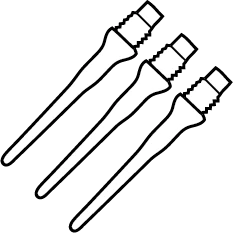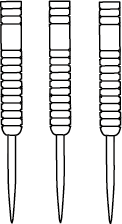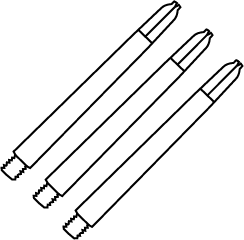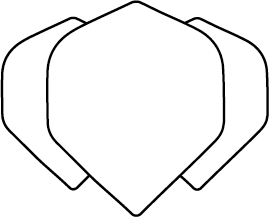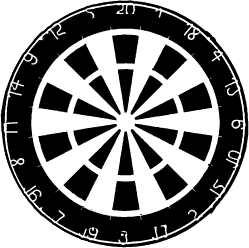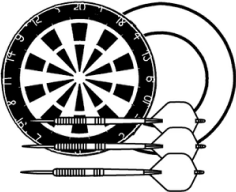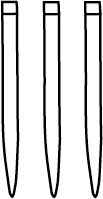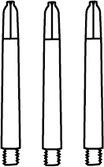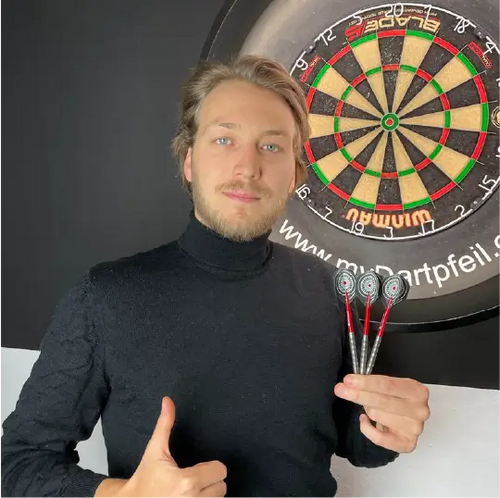Training is important. As with any other sport, you can only improve your performance through regular training. However, there are many different methods that influence this to varying degrees.
In this blog post we would like to specifically address training without a playing partner . Which dart training games alone make the most sense in front of the dartboard and how can you still create a pressure situation that you also know from competition? We are trying to help you.
170 – a classic for training the entire board for the finish area
Completing dart training games alone may bore some people. It lacks the thrill and pressure that you are exposed to in a competition .
Still, it can be fun to play darts alone - especially since, if we're honest, this is much more common than playing with colleagues. Why is 170 better than 501 ?
The game 501 focuses too much on pure scoring . Especially for beginners. To shorten the game version, you start at 170. This way you practice asserting yourself in the finish area , setting the desired numbers and playing the entire board .
The result of your performance can also be measured wonderfully in the 170 game. Do you only need three darts, the minimum number, or more than 9?
Infobox: What is important here is that you not only score, but also learn to play all fields. In the long run, you will be able to compare your training performance well if you record the results regularly.
Dart training games alone – all about the board
The warm-up game par excellence is, among other things, Around the Board or as many people probably know it better, Around the Clock . With this training game you can find out very well which fields you should practice more.
You can perfect the game so that you actually practice all the fields on the board .

In the standard version you can design the game so that you discard every single field from 1 to 20. You count the arrows that you need for each field and note the number.
So after a while you can check which fields you should still train . This exercise can of course also be extended to double and triple fields .
Infobox: Logically, you will also need a higher number of arrows for these significantly smaller fields.
Even combined, it makes sense to adapt the game so that, for example, you get one point for a single hit and three points for a triple hit. I
In this version you count the points you score and want to collect as many points as possible in the final tally. For guidance, we can tell you that a beginner will collect around 60 points with this version.
If you score over 100 points, you can definitely call yourself a player at a professional level . The other way around you can count the arrows you need to hit a field. Then of course the priority is to minimize the number of arrows.
Finishing – 10 points up, one point down
What also makes sense is that you regularly play through the game Finishing alone . The special appeal of this is finding out which finishes you are able to play and what you still find difficult.
So you start at 60 points . You have to check them with three darts. If you don't succeed, your value drops to 59, i.e. by one point. However, if you manage to check, the remaining score increases by 10 points to 70.
You can easily play the game for an hour . So over time you will see where the moment comes when you keep failing with three arrows.
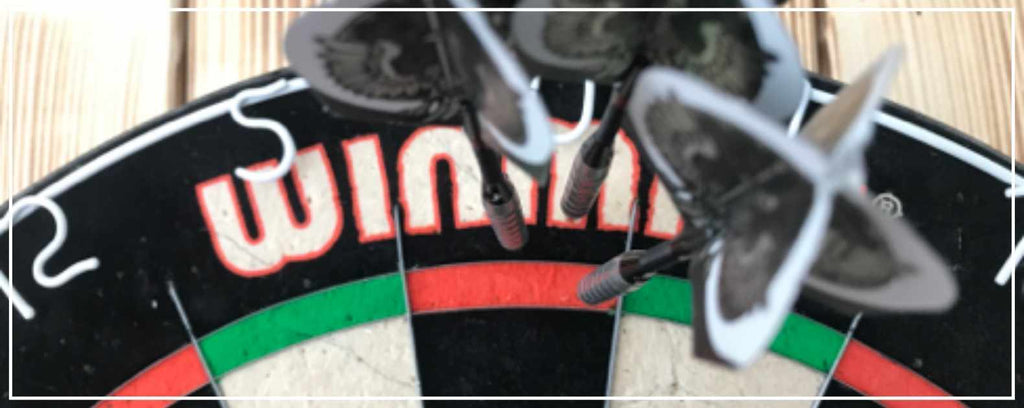
25 – the head needs to be trained
Another good dart training game on its own is the so-called “25”. Maybe even the best thing ever. Why is this so? In this game you start with a score of 25.
You now have three arrows to get each double . Starting at 1 up to 20 via the Bulls-Eye . Now the game runs like this. If you don't hit the double with any of the three arrows, the score for the double will be deducted from the 25 points on your account. For example, the calculation goes like this:
D1 missed: 25-2=23 remaining points
Once you reach 0, the game is over . Beginners can also play with minus points in order to continue playing until D20. But what happens if you hit the double once - or even twice?
In this case the score is just added to the 25 points . For example, if there are two hits in double 1, 4 points are added. In this case, you would have 29 points before throwing double 2.
This game is one of the most effective for training double fields under pressure . And it can also be easily implemented on your own.
100x20, 19 or 18
A rather dull training game for at home and especially on your own is to fire 100 darts at a segment. This game is particularly often used for the 18, 19 or 20 players - logical, because they should be trained the most.
In this game you throw at a segment 100 times in a row . A hit in the singles field scores one point, a double scores two points and a hit in the triple of the targeted segment scores three points.
At the end you add up the number of points you have achieved and compare them regularly. This gives you excellent control over whether you are more accurate on the 20 or other high fields.
Dart training games alone – Average
A game that has relatively little meaning is the game “ Average ”. This is basically about finding out your own average .
The significance is limited because there are no arrows pointing to the double fields. So only the point average is trained as a guide. This can be trained and calculated just like the previous game with 100 darts .
In this case, beginners are probably happy with an average of around 40. Trained players will only be satisfied with an average of 60 or more.

Dart training games alone – cricket
As a rule, your cricket will probably always be played against an opponent. Otherwise it makes very little sense. There is also an option to play cricket alone.
This also works by counting arrows . You try to throw the fields from 15 to 20 and the bulls-eye with as few arrows as possible.
Infobox: As is usual in cricket, this is the case with three hits. This also counts: Single = 1 point, Double = 2 points, Triple = 3 points.
At the end you add up the number of arrows you needed and can compare your performance relatively well - at least if you play it regularly over a certain period of time.
Don't have enough training games yet?
If these training games aren't enough for you, you should definitely check out our own myDartpfeil book . There you can find over 20 training games with explanations and difficulty levels .
There are also tips and tricks as well as a 4-week training plan .
Ready to take your skills to a new level? Discover our exclusive secrets and proven methods to optimize your game:
- Dart double training : All secrets revealed: This is how you become a double professional. Get information and train now. Click here » including free professional tips
- Killer darts for beginners and professionals. Discover proven strategies that will lead you to victory. Click in now and play successfully! including insider tip! ✓
- Excitement, action and strategy in Shanghai Darts : Our guide accompanies you on your way to victory. Click here and find out! | mydart arrow





